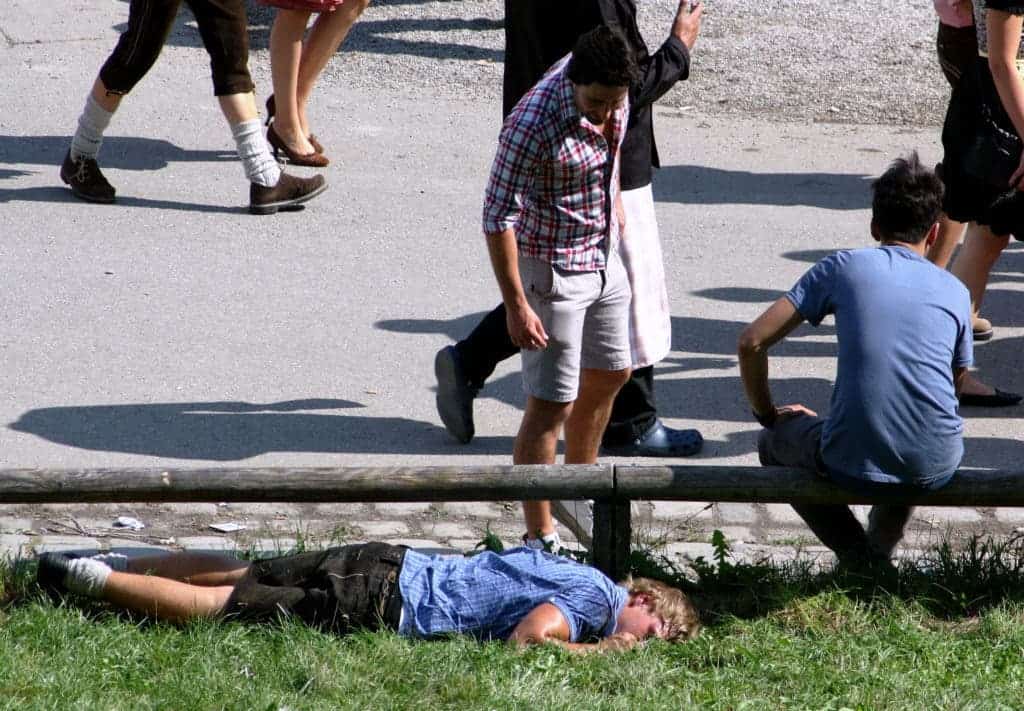The findings of a new Cardiff University study suggest that people estimate how drunk they are not by how much they’ve had to drink but by how they compare to the people around them.

Image via Wikimedia.
Heavy drinking isn’t healthy for you. We all know that. But somehow, when we go out for drinks, it becomes so easy to have more than what we’d consider a sensible amount of alcohol. University of Cardiff researchers think they know why this happens. In a new study, they found that while intoxicated and in a drinking environment, people’s perception of their own drunkenness and the health risk posed by their drinking are based on how intoxicated they are in comparison to others around them.
In other words, we feel less drunk and less at risk of the ones around us are more intoxicated, and more at risk when surrounded by more sober people.
“This has very important implications for how we might work to reduce excessive alcohol consumption,” said Professor Simon Moore from Cardiff University.
“We could either work to reduce the number of very drunk people in a drinking environment, or we could increase the number of people who are sober. Our theory predicts the latter approach would have greatest impact.”
The team tested the alcohol breath concentration (BrAC) of 1,862 people from different social groups, who averaged 27 years old. The tests were carried out between 8 PM and 3 AM on Friday and Saturday evenings at four locations near popular drinking spots. The participants were divided into eight reference groups based on location and gender — the idea was that people were most likely going to compare themselves with the members of the same gender in the location. Each individual’s BrAC levels were ranked withing their reference group.
A set of 400 people also answered four additional questions based on where they ranked in their group so that the team could study the dynamic between intoxication and people’s judgements: “How drunk are you right now?” for example, or “How extreme has your drinking been tonight?”, “If you drank as much as you have tonight every week how likely is it that you will damage your health / get liver cirrhosis in the next 15 years?”
Respondents with a BrAC of zero were not included in the rank-judgement analyses. On average, people considered themselves as moderately drunk and moderately at risk though their BrAC came in excess of standard US and UK drunk driving levels (35 micrograms of alcohol in 100 millilitres of breath.) On average, men had higher BrAC levels than women.
This study was the first look at how people estimate their intoxication and the consequences of alcohol consumption while drinking in a real-world watering hole. Previous work relied sober participants in lab conditions remembering how they compared to others while drinking. It also allowed a huge margin or error, as they compared their state to how drunk they perceived others to be.
“Researchers have historically worked under the assumption that those who drink most alcohol incorrectly ‘imagine’ everyone else also drinks to excess,” Moore added.
“It turns out that irrespective of how much someone has drunk, if they observe others who are more drunk than they are, they feel less at risk from drinking more.”
The researchers say the fact that people base their decision to drink on their environment and the people around them should form the basis of future alcohol reduction strategies. This study was observational, so it can increase our understanding of possible links between perceived drunkenness and drinking environments, but it’s not a direct cause-and-effect being established here. There are a lot of other factors that come into play when we decide whether to have another glass or not.
The study may also be limited by the assumption that people who are drinking in the same environment influence each other, which may not be the case — most of the people in the eight groups probably didn’t have any social relationship whatsoever. An experimental study would be needed to show a cause and effect. The researchers also suggest further investigation into the influences of more immediate social groups on drinking perception.
The full paper “A Rank Based Social Norms Model of How People Judge Their Levels of Drunkenness Whilst Intoxicated” has been published in the journal BMC Public Health.


